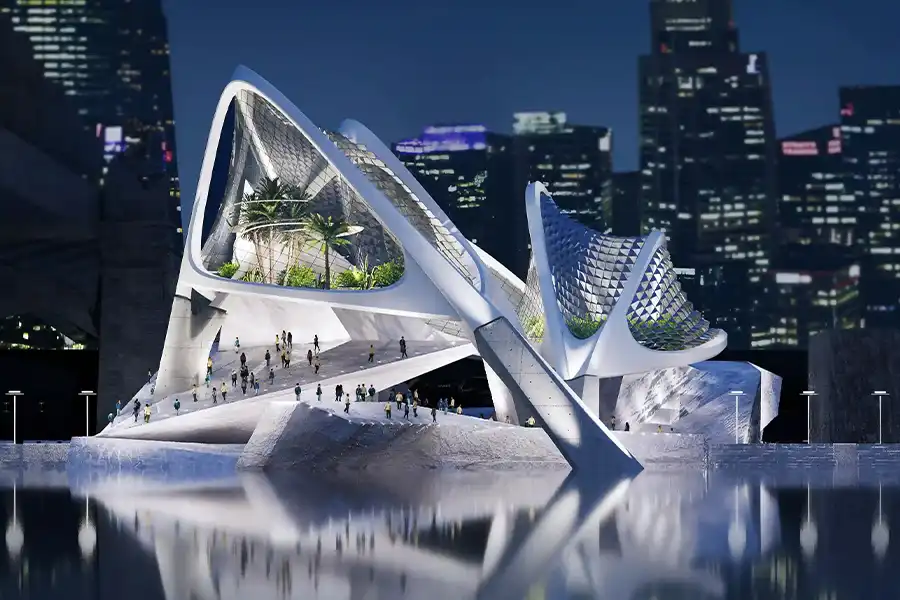
Nature has long served as a profound source of inspiration for architecture and design. Biomorphic architecture symbolizes this connection by embracing complex aesthetics and evolving design concepts inspired by organic forms. Let's explore biomorphic architecture, its unique design qualities, the relevant computational tools, and a designer’s perspective in crafting these expressive forms.
Inspired by nature, biomorphic architecture translates organic forms and systems into complex structures that not only mirror the intricate natural elements but also express new experiences of spaces and movement.
The term “biomorphic” comes from the Greek words bios (life) and morphe (form or shape). From different rich organic patterns, such as honeycombs or tree branches. Architects and designers implement biomorphic architecture to transform these patterns into spatial experiences.
Throughout history, pioneering architects explored biomorphic principles through hand-drawn sketches, physical models, and analog experimental work. An influential case, the Sagrada Familia, and its tree-like columns exemplify early biomorphic architecture, its sculptural form, and design expression.
Biomorphic architecture today continues to evolve in practice, now powered by computational design tools that allow for precise simulation and iteration of complex forms. As we explore the tools that streamline this process, we begin to understand how digital workflows are further developing organic architectural design.
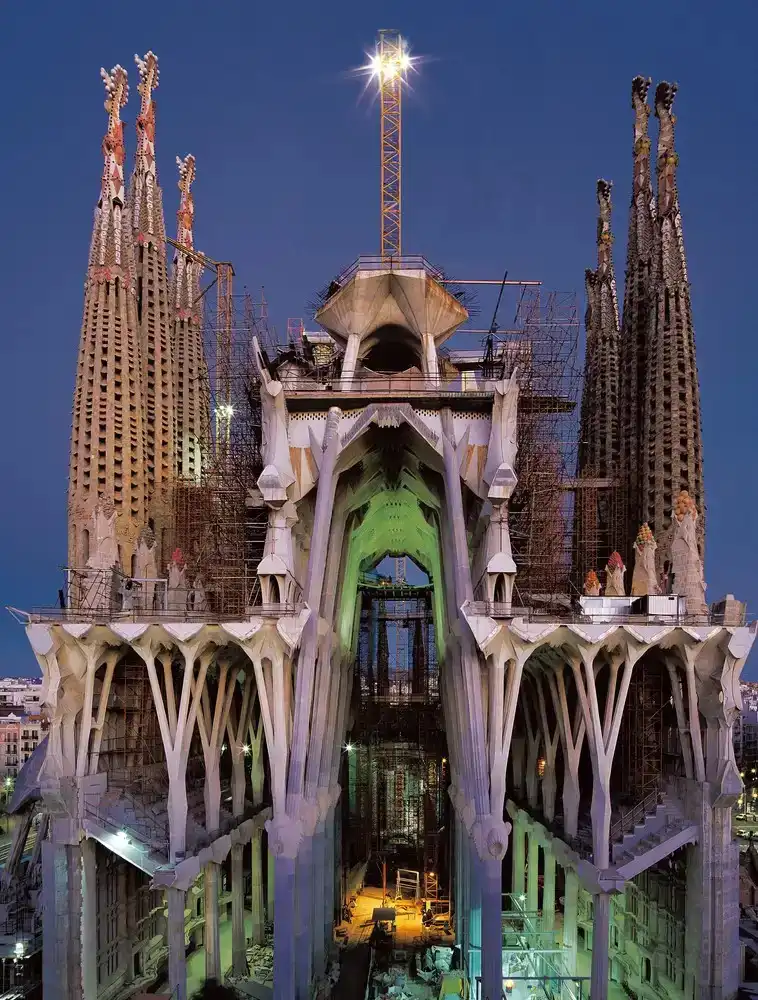
Biomorphic architecture is rooted in qualities that make it unique and impactful within the design discipline. These attributes not only distinguish it aesthetically but also contribute to its function and environment. Unique qualities that distinguish biomorphic architecture include:
A key characteristic of biomorphic architecture is its embrace of complexity, contrasting with the minimalism of modernist architectural design. These organic forms are often intricate, irregular, and full of complex movement, not only for aesthetic purposes but also reflecting an underlying structural and spatial intelligence.
Biomorphic design begins by drawing inspiration from natural forms that would act as a reference for the architectural form, such as spirals, branches, and cellular structures. These natural geometries provide the blueprint for architects and designers to develop the design concept further.
Biomorphic architecture transforms geometry into spatial storytelling, merging sculptural form expression with functional flow, creating immersive environments that provoke emotional responses to users and set dynamic interaction with the built space.
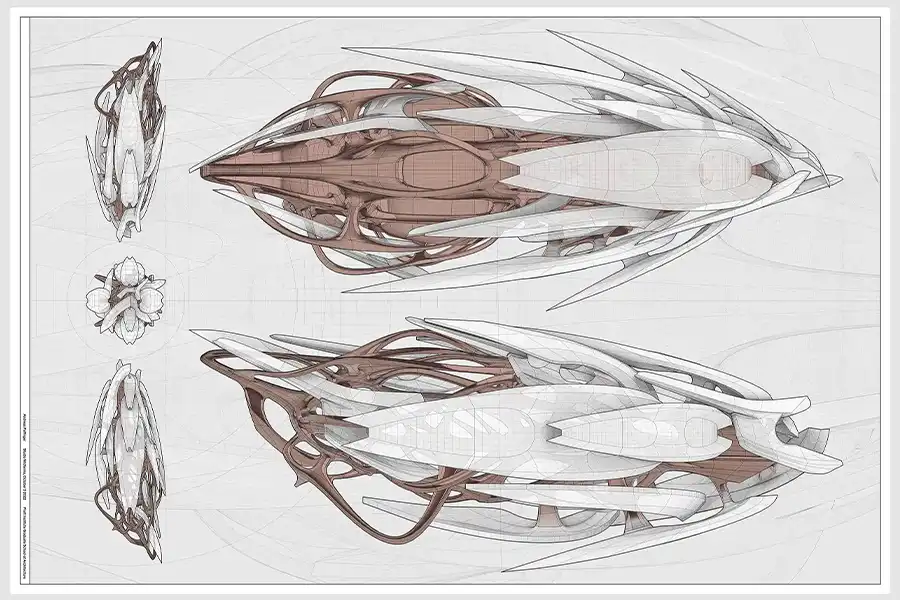
In the contemporary period, advanced computational tools have accelerated the ability to create and iterate between different intricate biomorphic designs. Architects are more able to translate natural systems and develop them into innovative spatial forms, implementing precision and artistic aesthetics. Let’s explore three of the most relevant tools used in the application of biomorphic architectural workflows: Grasshopper3D, Cinema 4D, and Blender.
Grasshopper3D, a visual programming environment integrated with Rhino3D, is widely recognized for its computational design capability. It allows architects and designers to create and manipulate geometry through a node-based interface.
In biomorphic architecture, Grasshopper3D provides flexible frameworks for algorithmic and parametric design approaches, where intricate forms inspired by natural systems can be constructed, tested, and iterated with precision. Plugins like Lunchbox, pufferfish, and Cocoon push the organic and complex design capabilities of Grasshopper3D further.
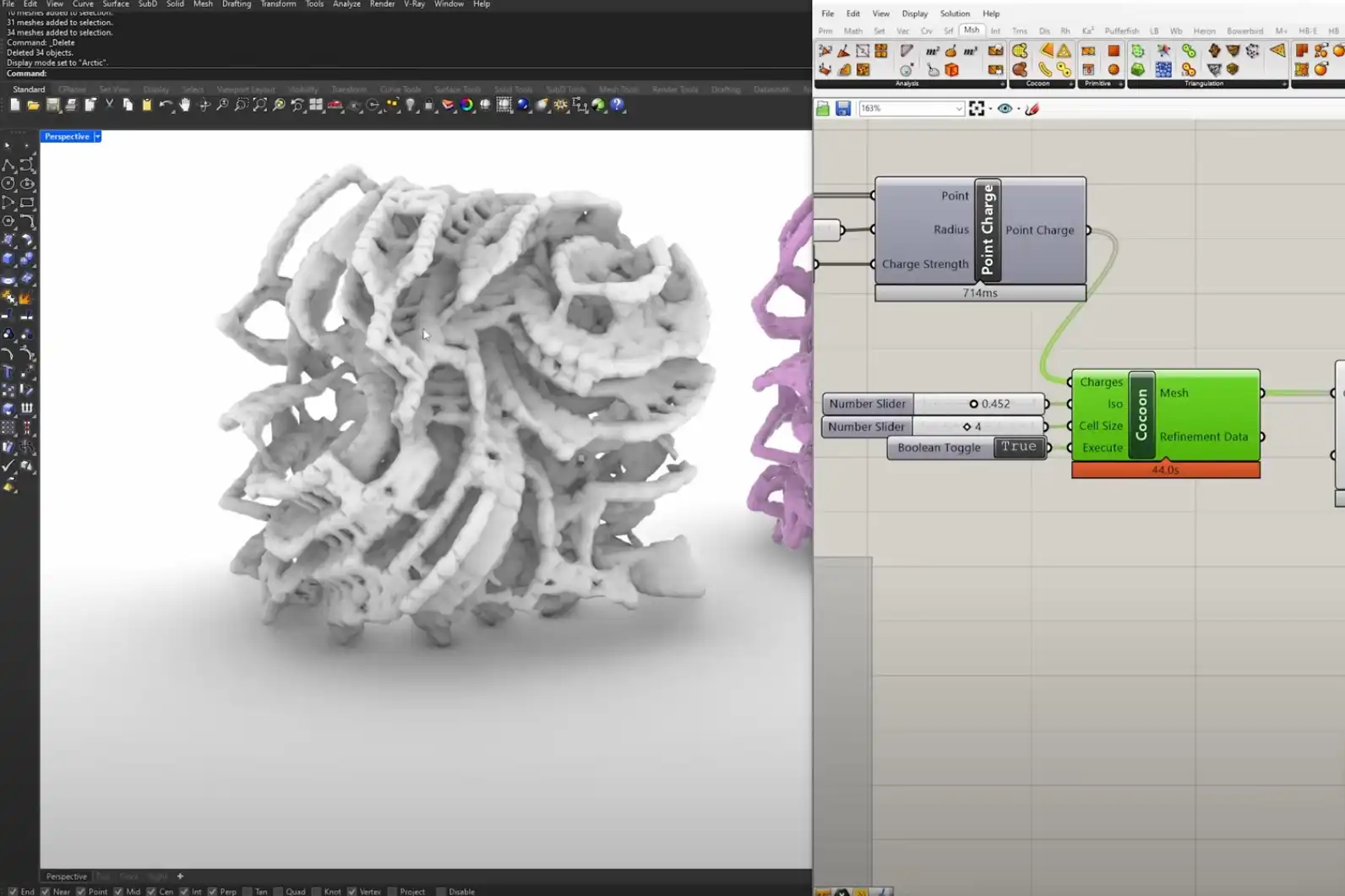
Cinema 4D is a professional 3D modeling and animation software that excels in its procedural modeling workflows and tools, such as MoGraph effectors, Cloner, and other tools, which allow designers to manipulate, develop, and deform 3D models. It can also dynamically animate forms using a set of rules and algorithms.
This procedural modeling approach enables the precise simulation of organic forms and complex structures. Cinema 4D is rich in generating morphing geometric systems, such as cellular patterns and growth-based designs, making it particularly well-suited for biomorphic architectural workflows.
Blender is free 3D modeling software that offers flexibility and high-performance modeling capabilities. It is famous for its sculpting tools and “Geometry Nodes”, a node-based interface, similar to Grasshopper3D.
The Geometry Nodes feature allows designers to formulate various scripting flows that create rule-based design processes, which makes Blender uniquely adaptive for designing complex, organic structures for biomorphic architecture workflows.
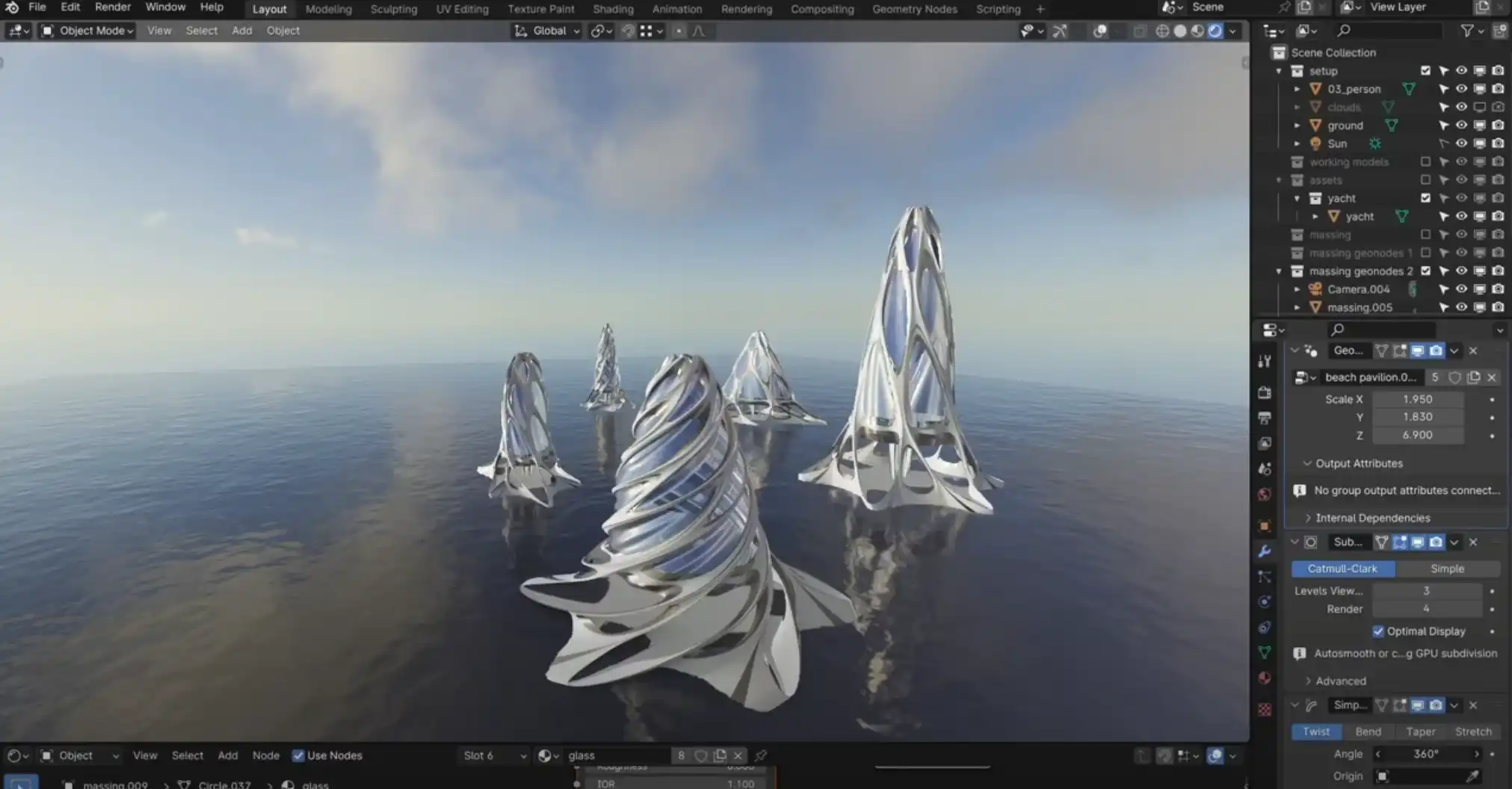
Andreas Palfinger, an interdisciplinary artist and architectural designer, showcases a new wave of design methods, pushing the limits of biomorphic architecture through complex, organic, and speculative design workflows. With a background spanning institutions like MAD Architects, CERN, and Superflux, Palfinger’s approach bridges speculative forms and artistic views in a practical design workflow.
Palfinger demonstrates how architecture can emulate intricate systems of nature. His unique design practice combines 3D modeling, CGI, and post-production assets into a holistic design workflow, merging advanced computational tools with artistic sensibilities, he has conducted multiple courses about the topic of biomorphic architecture at PAACADEMY, he is also going to lead an upcoming workshop titled “Artefacts of Growth: Biomorphic Structures in Cinema 4D”, feel free to explore it.
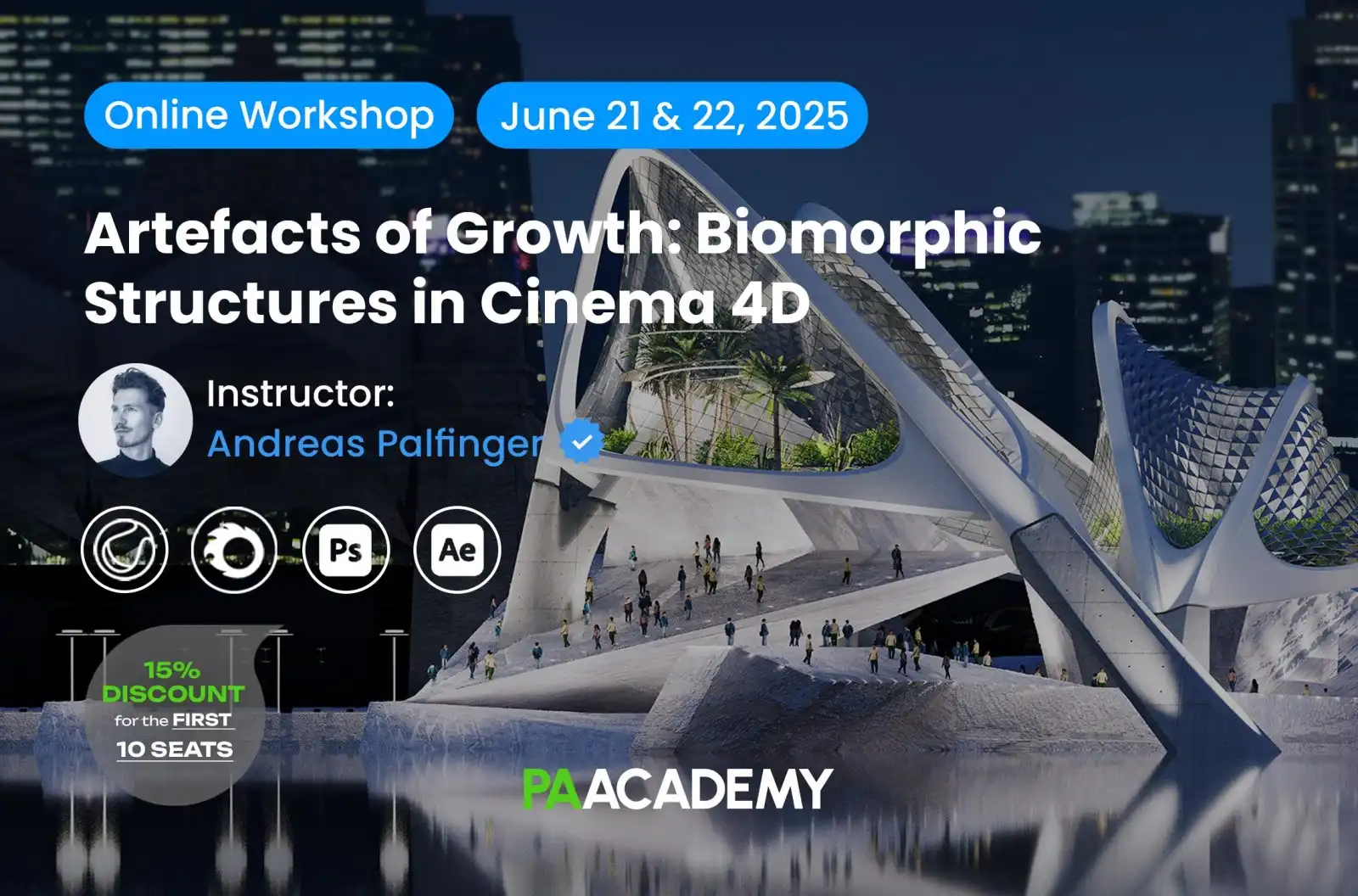
Using Cinema 4D, Palfinger crafts dynamic and complex geometries that reflect the structural intelligence of living organisms. His process deals with visual narratives, evolving procedural modeling processes, and iterating with form simulations. These tools become a medium for such innovative design outputs. Cinema 4D specifically plays a key role in his design process, enabling the creation of complex morphologies, growth-based systems, and dynamic visual textures that respond to spatial logic and artistic intentions.
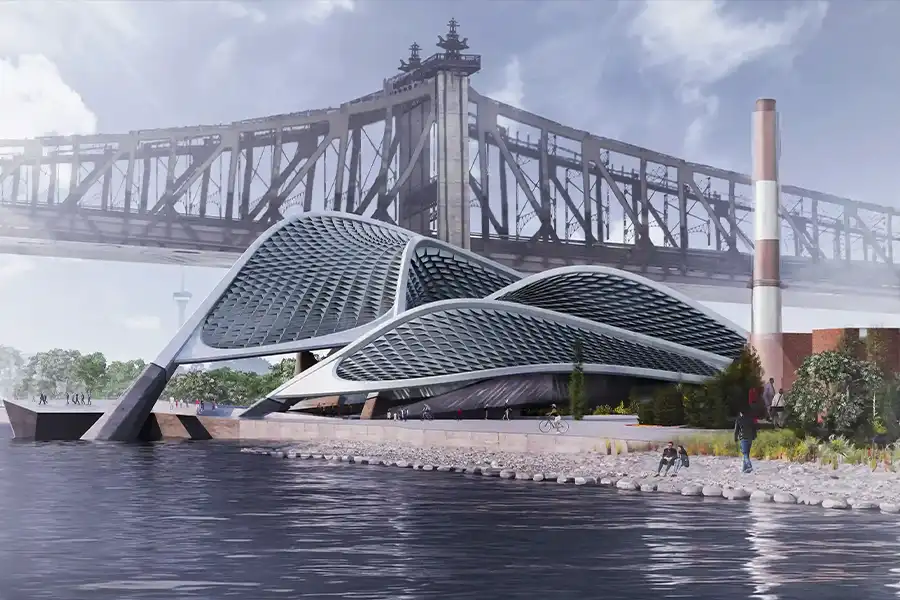
Biomorphic architecture redefines how we connect with nature through design. With tools like Grasshopper3D, Cinema 4D, and Blender, architects can craft complex, organic forms with precision and accuracy. As digital workflows evolve, the potential to shape architecture into expressive forms also evolves in parallel.
You must be logged in to comment.